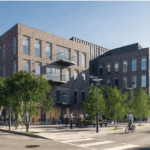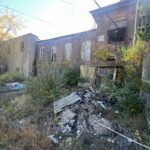In early 2023, I was out touring office buildings in Boston with prospective tenants through my brokerage, Burns Realty & Investments. I began to notice a stark disconnect between reported office vacancy rates and the reality on the ground. While data from CoStar, a real estate information firm, suggested modest vacancy rates, what we were seeing during our walk-throughs painted a very different picture.
One day I visited a building in the Leather District that claimed 80 percent occupancy. Yet as we walked up the stairs, passing dark office after dark office, it became clear that these spaces were, for all intents and purposes, vacant. It was 10 a.m. on a Tuesday, and the workers who occupied these spaces before the COVID-19 pandemic were not coming back. Desks covered in sticky notes with employees’ forgotten to-do lists, scribbled-on whiteboards from long-ago brainstorming sessions, and half-finished cups of coffee were visible when peering through the glass office doors. It looked like a sci-fi movie in which everyone had just vanished.At that moment, it became obvious to me and my team that Boston was on the precipice of an office vacancy crisis, but the problem had not yet fully materialized in the data. We also realized we had a potential solution — an opportunity to repurpose these underutilized spaces for housing
Source: Opinion | Boston’s empty offices are a housing opportunity







